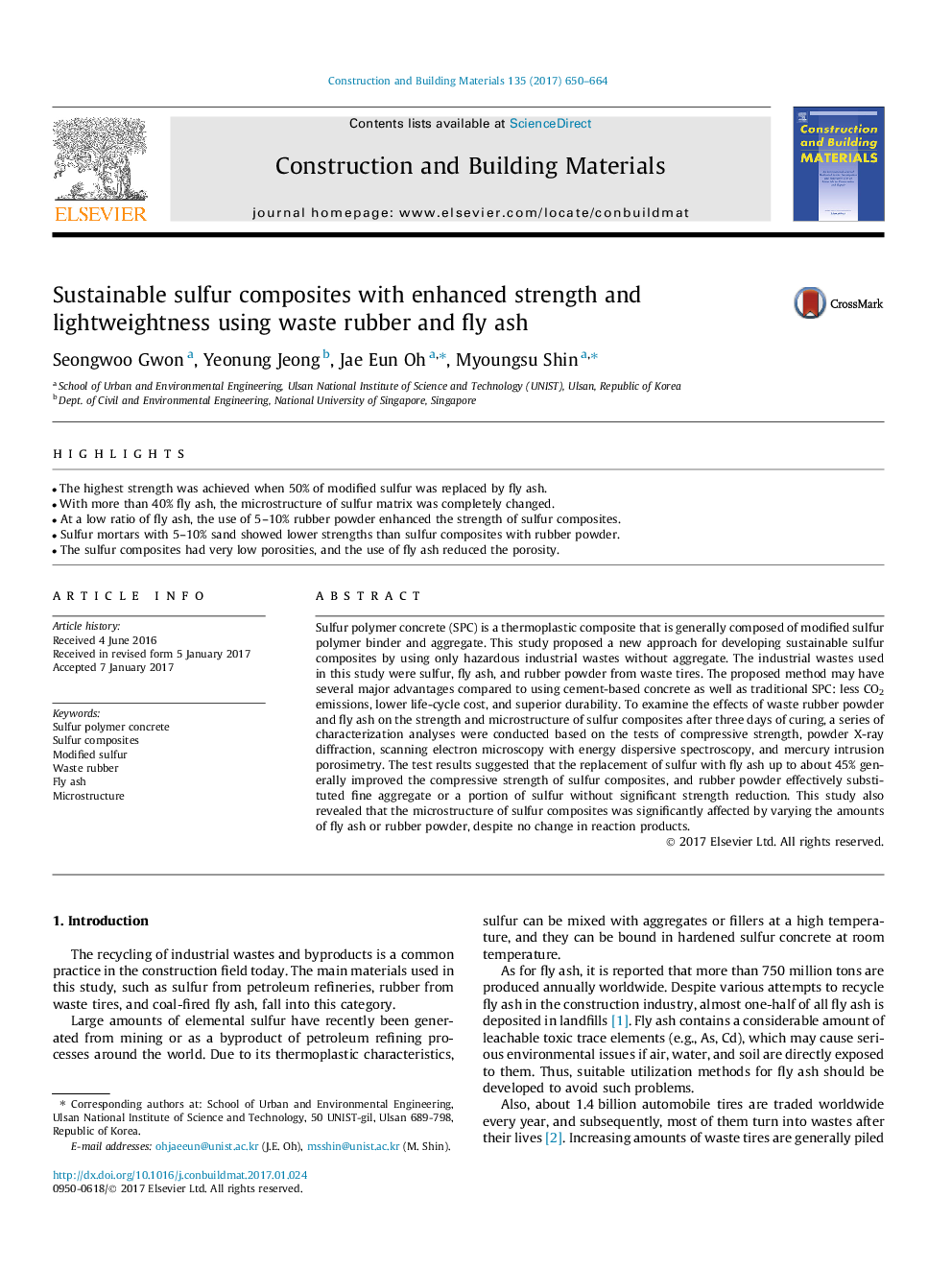| Article ID | Journal | Published Year | Pages | File Type |
|---|---|---|---|---|
| 4913601 | Construction and Building Materials | 2017 | 15 Pages |
Abstract
Sulfur polymer concrete (SPC) is a thermoplastic composite that is generally composed of modified sulfur polymer binder and aggregate. This study proposed a new approach for developing sustainable sulfur composites by using only hazardous industrial wastes without aggregate. The industrial wastes used in this study were sulfur, fly ash, and rubber powder from waste tires. The proposed method may have several major advantages compared to using cement-based concrete as well as traditional SPC: less CO2 emissions, lower life-cycle cost, and superior durability. To examine the effects of waste rubber powder and fly ash on the strength and microstructure of sulfur composites after three days of curing, a series of characterization analyses were conducted based on the tests of compressive strength, powder X-ray diffraction, scanning electron microscopy with energy dispersive spectroscopy, and mercury intrusion porosimetry. The test results suggested that the replacement of sulfur with fly ash up to about 45% generally improved the compressive strength of sulfur composites, and rubber powder effectively substituted fine aggregate or a portion of sulfur without significant strength reduction. This study also revealed that the microstructure of sulfur composites was significantly affected by varying the amounts of fly ash or rubber powder, despite no change in reaction products.
Keywords
Related Topics
Physical Sciences and Engineering
Engineering
Civil and Structural Engineering
Authors
Seongwoo Gwon, Yeonung Jeong, Jae Eun Oh, Myoungsu Shin,
